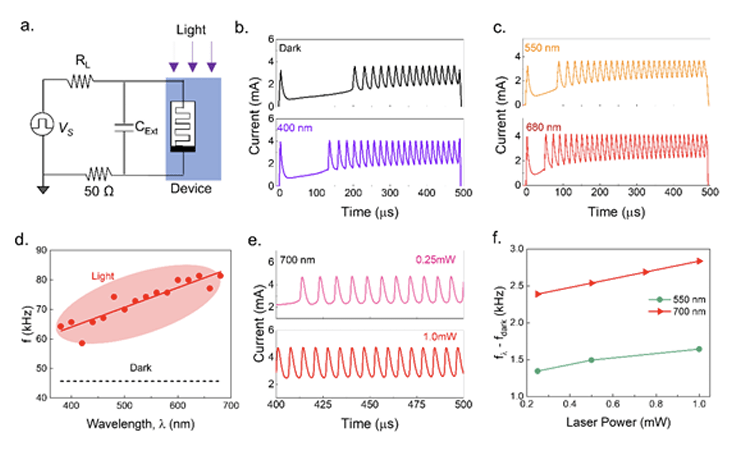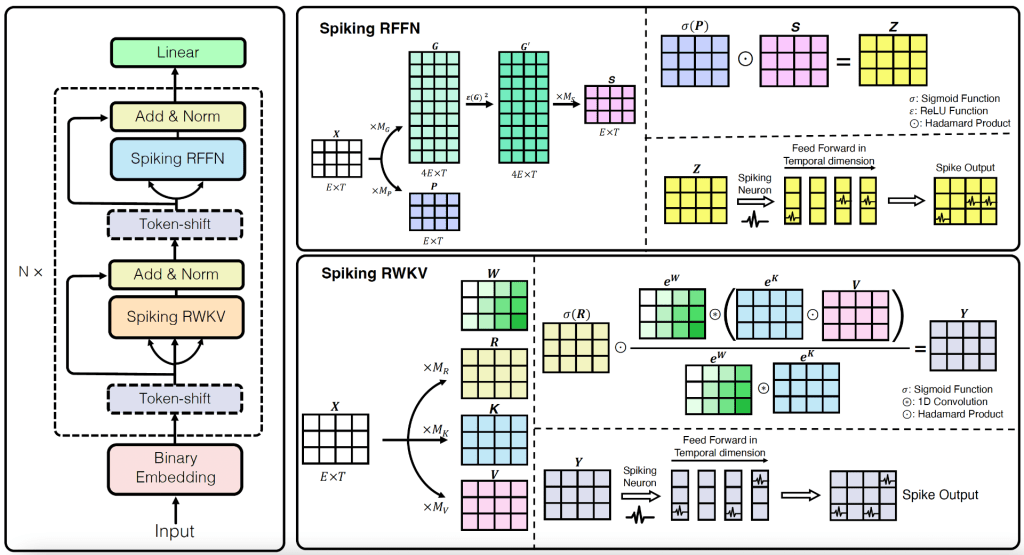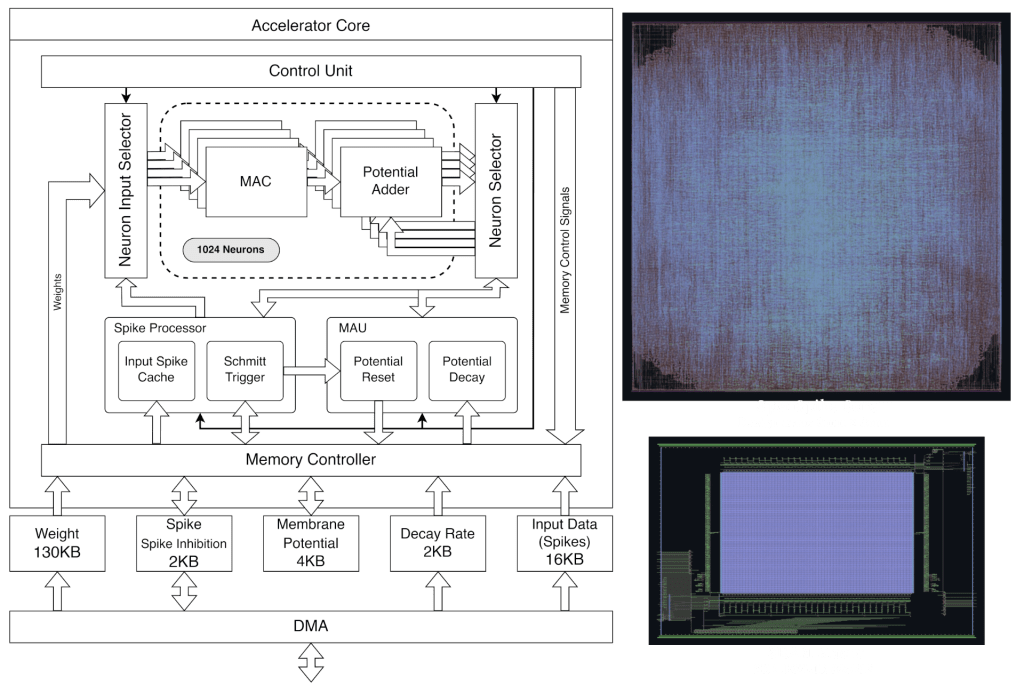
New Paper: “Optically Tunable Electrical Oscillations in Oxide-Based Memristors for Neuromorphic Computing” led by Collaborator Dr. Shimul K. Nath



Preprint link here.
Abstract: The integration of large language models (LLMs) into the medical field has gained significant attention due to their promising accuracy in simulated clinical decision-making settings. However, clinical decision-making is more complex than simulations because physicians’ decisions are shaped by many factors, including the presence of cognitive bias. However, the degree to which LLMs are susceptible to the same cognitive biases that affect human clinicians remains unexplored. Our hypothesis posits that when LLMs are confronted with clinical questions containing cognitive biases, they will yield significantly less accurate responses compared to the same questions presented without such biases.In this study, we developed BiasMedQA, a novel benchmark for evaluating cognitive biases in LLMs applied to medical tasks. Using BiasMedQA we evaluated six LLMs, namely GPT-4, Mixtral-8x70B, GPT-3.5, PaLM-2, Llama 2 70B-chat, and the medically specialized PMC Llama 13B. We tested these models on 1,273 questions from the US Medical Licensing Exam (USMLE) Steps 1, 2, and 3, modified to replicate common clinically-relevant cognitive biases. Our analysis revealed varying effects for biases on these LLMs, with GPT-4 standing out for its resilience to bias, in contrast to Llama 2 70B-chat and PMC Llama 13B, which were disproportionately affected by cognitive bias. Our findings highlight the critical need for bias mitigation in the development of medical LLMs, pointing towards safer and more reliable applications in healthcare.
Find the paper on IEEE Xplore here.
Abstract:
See the full paper here.
Heart failure is associated with a rehospitalisation rate of up to 50% within six months. Elevated central venous pressure may serve as an early warning sign. While invasive procedures are used to measure central venous pressure for guiding treatment in hospital, this becomes impractical upon discharge. A non-invasive estimation technique exists, where the clinician visually inspects the pulsation of the jugular veins in the neck, but it is less reliable due to human limitations. Video and signal processing technologies may offer a high-fidelity alternative. This state-of-the-art review analyses existing literature on camera-based methods for jugular vein assessment. We summarize key design considerations and suggest avenues for future research. Our review highlights the neck as a rich imaging target beyond the jugular veins, capturing comprehensive cardiac signals, and outlines factors affecting signal quality and measurement accuracy. Addressing an often quoted limitation in the field, we also propose minimum reporting standards for future studies.
This quarter, I introduced Brain-Inspired Machine Learning as a course to University of California, Santa Cruz. And while machine learning is cool and all, it’s only as good as the hardware it runs on.
31 students & first time chip designers all took the lead on building DRC/LVS clean neuromorphic circuits. Students came from grad & undergrad backgrounds across various corners of the university. ECE, CSE, Math, Computational Media, Bioengineering, Psychology, etc. Many had never even taken an ECE 101 class, and started learning from scratch 2 weeks ago.
Their designs are now all being manufactured together in the Sky130 Process. Each design is compiled onto the same piece of silicon with TinyTapeout, thanks to Matt Venn and Uri Shaked.
We spent Friday night grinding in my lab while blaring metalcore tunes. All students managed to clear all checks. The final designs do a heap of cool things like accelerate sparse matrix-multiplies, event denoising, to simulating reservoir networks. I naturally had to squeeze in a Hodgkin-Huxley neuron in the 6 hours before the deadline (pictured).
Not sure if it’s the cost of living, or the mountain lions on campus, but damn. UCSC students have some serious grit.

My baby was finally accepted for publication. Available open-access on IEEE Xplore.
Prof. Jason Eshraghian & Dr. Peng Zhou were topic area leaders at the Telluride Neuromorphic Engineering & Cognition Workshop. Tasks addressed included:
porting open silicon (hardware) to neuromorphic engineering,
linking in-vitro neural networks (wetware) to neuromorphic computing, and
modelling and training those with spiking neural networks using neuromorphic software.
A project highlight includes the development of the Neuromorphic Intermediate Representation (NIR), an intermediate representation to translate various neuromorphic and physics-driven models that are based on continuous time ODEs into different formats. This makes it much easier to deploy models trained in one library to map to a large variety of backends.


Abstract: If we had a dollar for every time we heard “It will never scale!”, then neuromorphic engineers would be billionaires. This presentation will be centered on SpikeGPT, the first large-scale language model (LLM) using spiking neural nets (SNNs), and possibly the largest SNN that has been trained using error backpropagation.
The need for lightweight language models is more pressing than ever, especially now that we are becoming increasingly reliant on them from word processors and search engines, to code troubleshooting and academic grant writing. Our dependence on a single LLM means that every user is potentially pooling sensitive data into a singular database, which leads to significant security risks if breached.
SpikeGPT was built to move towards addressing the privacy and energy consumption challenges we presently run into using Transformer blocks. Our approach decomposes self-attention down into a recurrent form that is compatible with spiking neurons, along with dynamical weight matrices where the dynamics are learnable, rather than the parameters as with conventional deep learning.
We will provide an overview of what SpikeGPT does, how it works, and what it took to train it successfully. We will also provide a demo on how users can download pre-trained models available on HuggingFace so that listeners are able to experiment with them.
Link to the talk can be found here.
Abstract: Artificial neural networks (ANNs) have emerged as an essential tool in machine learning, achieving remarkable success across diverse domains, including image and speech generation, game playing, and robotics. However, there exist fundamental differences between ANNs’ operating mechanisms and those of the biological brain, particularly concerning learning processes. This paper presents a comprehensive review of current brain-inspired learning representations in artificial neural networks. We investigate the integration of more biologically plausible mechanisms, such as synaptic plasticity, to enhance these networks’ capabilities. Moreover, we delve into the potential advantages and challenges accompanying this approach. Ultimately, we pinpoint promising avenues for future research in this rapidly advancing field, which could bring us closer to understanding the essence of intelligence.
Link to the preprint here.

We submitted this extensive (and opinionated) guide to training spiking neural networks to the Proceedings of the IEEE 18 months ago. During this time, the preprint has reached 100+ citations, snnTorch has cracked 80,000 downloads, and it has helped numerous people enter the field of neuromorphic computing… and much of the content that was true 18 months ago has significantly changed.

While we continue to wait for the peer review process to do its thing, I’ve taken the liberty to revamp the preprint to reflect the rapidly changing world of training and using SNNs.
The latest version includes “Practical Notes” with black magic tricks that have helped us improve the performance of SNNs, code-snippets that reduce verbose explanations, and a fresh account of some of the latest going-ons in the neuroscience-inspired deep learning world..
Thank you to Gregor Lenz, Xinxin Wang and Max Ward for working through this >50 page monster.
Preprint link here.
The paper titled “How to Build a Memristive Integrate-and-Fire Neuron for Spiking Neuronal Signal Generation” has been awarded the 2023 IEEE Transaction on Circuits and Systems Darlington Best Paper Award. This paper was led by Prof. Sung-Mo Kang, Prof. Jason Eshraghian and Prof. Leon O. Chua in a collaboration spanning UC Santa Cruz, UC Berkeley, University of Michigan, TU Dresden, and Syungkyunkwan University.
The Darlington Best Paper Award annually recognizes one paper that bridges the gap between theory and practice published in the IEEE Transactions on Circuits and Systems and was presented to authors at the 2023 IEEE International Symposium on Circuits and Systems in Monterey, California.

See the announcement here.
The paper is available via IEEE.
Led by Ziyu Wang and Prof. Wei D. Lu (University of Michigan).
Abstract: Analog compute-in-memory (CIM) accelerators are becoming increasingly popular for deep neural network (DNN) inference due to their energy efficiency and in-situ vector-matrix multiplication (VMM) capabilities. However, as the use of DNNs expands, protecting user input privacy has become increasingly important. In this paper, we identify a security vulnerability wherein an adversary can reconstruct the user’s private input data from a power side-channel attack, under proper data acquisition and pre-processing, even without knowledge of the DNN model. We further demonstrate a machine learning-based attack approach using a generative adversarial network (GAN) to enhance the reconstruction. Our results show that the attack methodology is effective in reconstructing user inputs from analog CIM accelerator power leakage, even when at large noise levels and countermeasures are applied. Specifically, we demonstrate the efficacy of our approach on the U-Net for brain tumor detection in magnetic resonance imaging (MRI) medical images, with a noise-level of 20% standard deviation of the maximum power signal value. Our study highlights a significant security vulnerability in analog CIM accelerators and proposes an effective attack methodology using a GAN to breach user privacy.
Preprint: https://arxiv.org/abs/2304.11056
Led by Jason Yik, Vijay Janapa Reddi (Harvard University), and Charlotte Frenkel (TU Delft), the NeuroBench project aims to drive progress in neuromorphic computing by defining benchmarks for neuromorphic algorithms and systems.
Abstract: The field of neuromorphic computing holds great promise in terms of advancing computing efficiency and capabilities by following brain-inspired principles. However, the rich diversity of techniques employed in neuromorphic research has resulted in a lack of clear standards for benchmarking, hindering effective evaluation of the advantages and strengths of neuromorphic methods compared to traditional deep-learning-based methods. This paper presents a collaborative effort, bringing together members from academia and the industry, to define benchmarks for neuromorphic computing: NeuroBench. The goals of NeuroBench are to be a collaborative, fair, and representative benchmark suite developed by the community, for the community. In this paper, we discuss the challenges associated with benchmarking neuromorphic solutions, and outline the key features of NeuroBench. We believe that NeuroBench will be a significant step towards defining standards that can unify the goals of neuromorphic computing and drive its technological progress. Please visit this http URL for the latest updates on the benchmark tasks and metrics.
Preprint: https://arxiv.org/abs/2304.04640
Website: https://neurobench.ai/
“Side-channel attack analysis on in-memory computing architectures” has been published, led by Ziyu Wang and Prof. Wei Lu (Lu Group), along with collaborators Fan-Hsuan Meng and Yongmo Park.
Abstract—In-memory computing (IMC) systems have great potential for accelerating data-intensive tasks such as deep neural networks (DNNs). As DNN models are generally highly proprietary, the neural network architectures become valuable targets for attacks. In IMC systems, since the whole model is mapped on chip and weight memory read can be restricted, the system acts as a ”black box” for customers. However, the localized and stationary weight and data patterns may subject IMC systems to other attacks. In this paper, we propose a side-channel attack methodology on IMC architectures. We show that it is possible to extract model architectural information from power trace measurements without any prior knowledge of the neural network. We first developed a simulation framework that can emulate the dynamic power traces of the IMC macros. We then performed side-channel attacks to extract information such as the stored layer type, layer sequence, output channel/feature size and convolution kernel size from power traces of the IMC macros. Based on the extracted information, full networks can potentially be reconstructed without any knowledge of the neural network. Finally, we discuss potential countermeasures for building IMC systems that offer resistance to these model extraction attack.

We have released SpikeGPT led by Ruijie Zhu and Qihang Zhao, the largest-scale SNN training via backprop to date, and (to the best of our knowledge) the first generative language spike-based model.

Abstract: As the size of large language models continue to scale, so does the computational resources required to run it. Spiking neural networks (SNNs) have emerged as an energy-efficient approach to deep learning that leverage sparse and event-driven activations to reduce the computational overhead associated with model inference. While they have become competitive with non-spiking models on many computer vision tasks, SNNs have also proven to be more challenging to train. As a result, their performance lags behind modern deep learning, and we are yet to see the effectiveness of SNNs in language generation. In this paper, we successfully implement `SpikeGPT’, a generative language model with pure binary, event-driven spiking activation units. We train the proposed model on three model variants: 45M, 125M and 260M parameters. To the best of our knowledge, this is 4x larger than any functional backprop-trained SNN to date. We achieve this by modifying the transformer block to replace multi-head self attention to reduce quadratic computational complexity to linear with increasing sequence length. Input tokens are instead streamed in sequentially to our attention mechanism (as with typical SNNs). Our preliminary experiments show that SpikeGPT remains competitive with non-spiking models on tested benchmarks, while maintaining 5x less energy consumption when processed on neuromorphic hardware that can leverage sparse, event-driven activations. Our code implementation is available at https://github.com/ridgerchu/SpikeGPT.
Preprint: https://arxiv.org/abs/2302.13939
Code: https://github.com/ridgerchu/SpikeGPT
BPLC + NOSO has been published, led by Seong Min Jin and Doo Seok Jeong (Jeong Lab), along with collaborators Dohun Kim and Dong Hyung Yoo.
Abstract: For mathematical completeness, we propose an error-backpropagation algorithm based on latency code (BPLC) with spiking neurons conforming to the spike–response model but allowed to spike once at most (NOSOs). BPLC is based on gradients derived without approximation unlike previous temporal code-based error-backpropagation algorithms. The latency code uses the spiking latency (period from the first input spike to spiking) as a measure of neuronal activity. To support the latency code, we introduce a minimum-latency pooling layer that passes the spike of the minimum latency only for a given patch. We also introduce a symmetric dual threshold for spiking (i) to avoid the dead neuron issue and (ii) to confine a potential distribution to the range between the symmetric thresholds. Given that the number of spikes (rather than timesteps) is the major cause of inference delay for digital neuromorphic hardware, NOSONets trained using BPLC likely reduce inference delay significantly. To identify the feasibility of BPLC + NOSO, we trained CNN-based NOSONets on Fashion-MNIST and CIFAR-10. The classification accuracy on CIFAR-10 exceeds the state-of-the-art result from an SNN of the same depth and width by approximately 2%. Additionally, the number of spikes for inference is significantly reduced (by approximately one order of magnitude), highlighting a significant reduction in inference delay.
Paper: https://link.springer.com/article/10.1007/s40747-023-00983-y
Code: https://github.com/dooseokjeong/BPLC-NOSO
We have a new a new snnTorch tutorial/notebook on training spiking neurons with varied types of recurrent spiking neurons.
This is the second tutorial in a 3-part series on regression.
Link to the tutorial here.

Abstract: The vast majority of studies that process and analyze neural signals are conducted on cloud computing resources, which is often necessary for the demanding requirements of Deep Neural Network (DNN) workloads. However, applications such as epileptic seizure detection stand to benefit from edge devices that can securely analyze sensitive medical data in real-time and personalised manner. In this work, we propose a novel neuromorphic computing approach to seizure detection using a surrogate gradient-based deep Spiking Neural Network (SNN), which consists of a novel Spiking ConvLSTM unit (SPCLU). We have trained, validated, and rigorously tested the proposed SNN model across three publicly accessible datasets, including Boston Children’s Hospital–MIT (CHB-MIT) dataset from the U.S., and the Freiburg (FB) and EPILEPSIAE intracranial EEG (iEEG) datasets from Germany. The average leave-one-out cross-validation AUC score for FB, CHB-MIT, and EPILEPSIAE datasets can reach 92.7%, 89.0%, and 81.1%, respectively, while the computational overhead and energy consumption are significantly reduced when compared to alternative state-of-the-art models, showing the potential for building an accurate hardware-friendly, low-power neuromorphic system. This is the first feasibility study using a deep Spiking Neural Network for seizure detection on several reliable public datasets.
Read more here.
Farhad Modaresi has led the design and tape-out of a fully open-sourced spiking neural network accelerator in the Skywater 130 process. The design is based on memory macros generated using OpenRAM.
Many of the advances in deep learning this past decade can be attributed to the open-source movement where researchers have been able to reproduce and iterate upon open code bases. With the advent of open PDKs (SkyWater), EDA toolchains, and memory compilers (OpenRAM by co-author Matthew Guthaus), we hope to port rapid acceleration in hardware development to the neuromorphic community.
Check out the preprint here: https://arxiv.org/abs/2302.01015
GitHub repo with RTL you are welcome to steal: https://github.com/sfmth/OpenSpike
